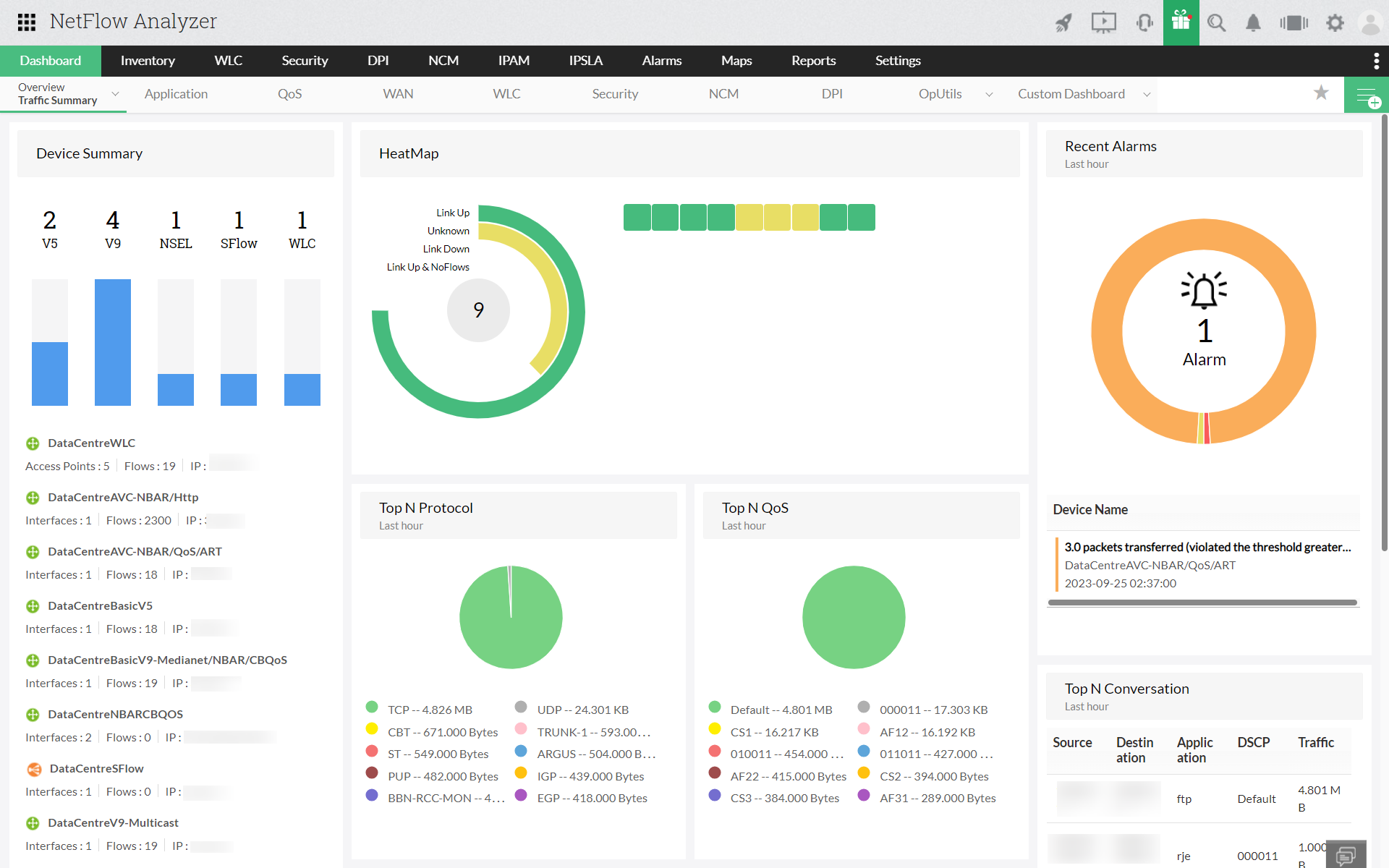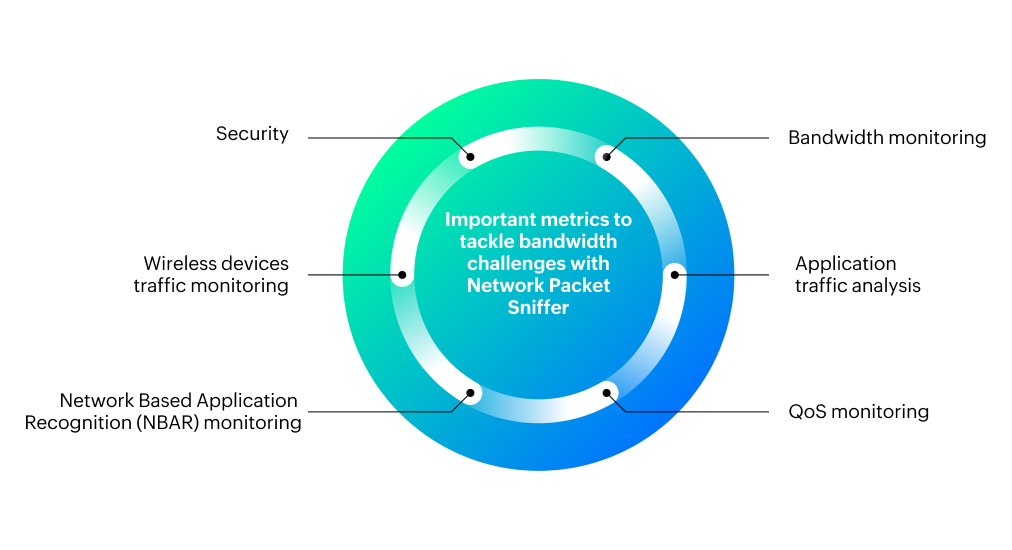An organization's network is vast with numerous nodes like servers, switches, routers, and access points. With many resources and traffic constantly passing through these nodes, it can be hard to determine if an abundance of traffic is authentic or an indication of a security attack. Having visibility into and knowledge about your organization's network traffic is crucial. A helpful resource is owning the best network packet sniffer tool.
A network packet sniffer is a tool that sniffs or captures every link passing through the network, giving you information about the top talkers. You can avoid network or security related issues since the tool will sniff the packets, record the header section, help you validate the traffic, and diagnose performance problems, whether with the routers, applications, or network.
Apart from performance-related issues, there are many advantages for your organization to use a network packet sniffer tool.
Let's now discuss some key aspects about this resource.
As organizations rely more on applications for basic file transfer, more traffic passes through a network. When there is even a small setback in performance, it is wise to look into the root cause of the issue to determine whether it results from the application's availability, low bandwidth, or server's high utilization. With so many aspects to look at, it can be challenging to pinpoint the origin of the issue.
Troubleshooting in these cases can take a lot of time and effort. Without visibility into the origin and path taken by the data packets, it becomes difficult to locate a problem. But using a packet sniffer, network admins can spot and resolve issues, ensuring high performance is maintained.
There are multiple reasons why the performance of your network might be degrading. Common reasons include employees using a lot of the available bandwidth for social media sites and degradations occurring during intervals when network software is being updated.
Non-business traffic uses often leave less bandwidth for business-critical applications to perform smoothly. But you can filter or eliminate much of this non-business type of traffic by using a network sniffer to evaluate bandwidth usage.
A software packet sniffer analyzes each packet at a granular level since it utilizes a deep packet inspection (DPI) mechanism. You can evaluate the data you want to learn about its source or destination and block or control access to specific IP addresses to maintain security.
Some queries in network traffic monitoring that bug you might be: What applications or ports and protocols are using the bandwidth? Why is the network bandwidth still not adequate even after several upgrades? How do you restrict the use of those bandwidth hog applications so that the business-critical applications have enough bandwidth?
To answer these questions, you need visibility into the traffic of each device and interface, and the capability to check how much of the available bandwidth is utilized by the particular entity.
By drilling down into the bandwidth use of every node, you can find where and what is causing the slowness, and then decide if it needs an upgrade or optimization.
The benefits of your bandwidth are evident only when the quality of media-rich applications meets expectations. Your bandwidth should be free of issues like jitter, latency, and should have a short round-trip time so that there are no hiccups in productivity.
Monitoring the VoIP, WAN, and video traffic is necessary not just to ensure the health of the network, but also help you have knowledge about how your organization's network can handle the media traffic.
Most times, finding the fault in an element when the network is slow is an uphill battle. There are many reasons, like insufficient bandwidth or an application's server is having a downtime or the device misconfiguration, when the packets might not reach their destination. With a packet sniffer tool's DPI, you can know if the issue is with application or network side, and reduce the mean time to know (MTTK).
Network packet sniffing software is a necessity, as it can address the above-mentioned aspects in your environment, and makes the implementation easier and results fruitful. As an advanced bandwidth monitoring and traffic analysis tool, NetFlow Analyzer helps you know your network's performance including what traffic is passing through your network, and network anomalies. You can dictate which applications should use your bandwidth, and restrict access to other links. With DPI, this tool helps secure your network and troubleshoot network congestion issues.

Utilizing a tool like NetFlow Analyzer, monitoring can be extensive and effective. However, there are a few important metrics to consider while carrying out packet sniffing to achieve better security and bandwidth management.

Want to know more about NetFlow Analyzer's benefits? Learn how our solution helped other organizations secure their network from attacks and unnecessary bandwidth upgradation investments with our resources here.